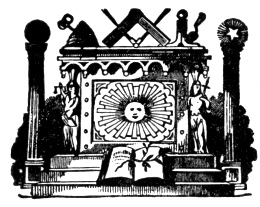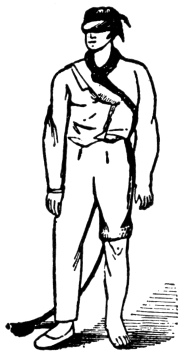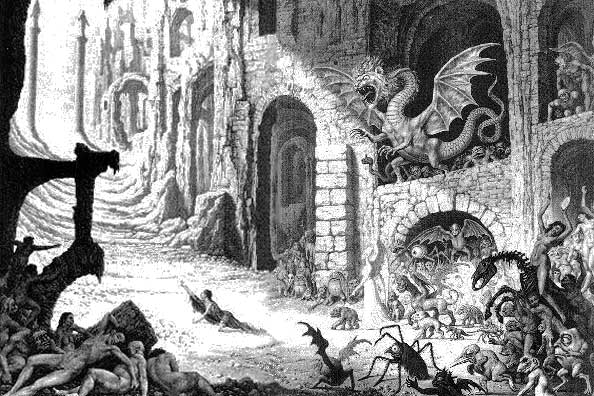Q. How many jewels has a Lodge?
A. Six: three movable, and three immovable.1
Q. What are the movable jewels?
A. The rough ashler, the perfect ashler, and the trestle-board.
Q. What are they?
A. Rough ashler is a stone in its rough and natural state; the perfect ashler is also a stone, made ready by the working-tools of the fellow craft, to be adjusted in the building; and the trestle-board is for the master workman to draw his plans and designs upon.
Q. Of what do they remind us?
p. 53
A. By the rough ashler we are reminded of our rude and imperfect state by nature; by the perfect ashler of that state of perfection at which we hope to arrive by a virtuous education, our own endeavors, and the blessing of God; and by the trestle-board we are also reminded that, as the operative workman erects his temporal building agreeably to the rules and designs laid down by the Master on his trestle-board, so should we, both operative and speculative, endeavor to erect our spiritual building agreeably to the rules and designs laid down by the Supreme Architect of the universe, in the great book of Revelation, which is our spiritual, moral, and Masonic trestle-board.
Q. What are the three immovable jewels?
A. The square, level, and plumb.
Q. What do they masonically teach us?
A. The square teaches morality; the level, equality: and the plumb teaches rectitude of life.
Q. How should a Lodge be situated?
A. Due east and west.
Q. Why so?
A. Because, after Moses had safely conducted the children of Israel through the Red Sea, by Divine command he erected a tabernacle to God, and placed it due east and west, which was to commemorate to the latest posterity that miraculous east wind that wrought their mighty deliverance–this was an exact model of Solomon’s Temple; since which time every well regulated and governed Lodge is, or ought to be, so situated.
Q. To whom were Lodges dedicated in ancient times?
A. To King Solomon.
Q. Why so?
A. Because it was said he was our most ancient Grand Master, or the founder of our present system.
Q. To whom in modern times?
A. To St. John the Baptist and St. John the Evangelist, who were two eminent Christian patrons of Masonry; and since their time there is, or ought to be, represented in every
 |
regular and well-governed Lodge a certain “point within a circle,” the point representing an individual brother, the circle the boundary-line of his conduct beyond which he is never to suffer his prejudices or passions to betray him. This circle is embodied by two perpendicular parallel lines, representing St. John the Baptist and St. John the Evangelist; and upon the top rest the Holy Scriptures. In going round this circle, we necessarily touch upon these two lines, as well upon the Holy Scriptures, and while
p. 54
a Mason keeps himself circumscribed within their precepts it is impossible that he should materially err.
This ends the lecture1 on the Entered Apprentices’ Degree. But very few Masons are sufficiently posted in these lectures to answer every inquiry respecting then. Not one in a hundred ever gets them perfect, none but a few aspiring members seeking after office take the trouble to commit them to memory, and some of these do so very imperfectly. Most Masters, at the present day, qualify themselves for the office of Master by purchasing Richardson’s or Avery Allyn’s Masonic exposures. These works have, of course, to be amended. On perusing the present work the reader will be greatly surprised at the striking resemblance it bears to the works just mentioned, especially in the lectures; but let him mark the alterations, principally at the commencement of each lecture
In some Lodges the following lecture is used, especially in the Northwestern States:
Q. What are the points of your profession?
A. Brotherly love, relief, and truth.
Q. Why so? (See Masonic Monitors, on “Brotherly Love, Relief, and Truth.”)

Moe is the founder of GnosticWarrior.com. He is a father, husband, author, martial arts black belt, and an expert in Gnosticism, the occult, and esotericism.






